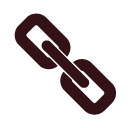Outlook Integration: Migrating to Office 365
May 2019 Tags: Microsoft Exchange, Outlook Integration, PracticeMaster
My firm currently has an on-site Exchange Server that needs to be updated. Instead of replacing it, we’re considering migrating to a Hosted Exchange server and possibly purchasing an Office 365 license. Does PracticeMaster integrate with these products? If so, does our IT need to do anything special for PracticeMaster when migrating to a hosted Exchange environment?
PracticeMaster can integrate with any local installation of Microsoft Outlook. If you’re using Office 365, you can install Outlook locally. PracticeMaster’s integration with Outlook relies on the local mail profile and therefore should be unaffected by the location of the Exchange Server.
When integrating Calendar and/or Contact records between PracticeMaster and Outlook, Tabs3 recommends having a conversation with your IT Department or whoever will be performing the migration before migrating to a new Exchange Server. In order to plan the migration process, they will need to review our Knowledge Base Article R11731, “Exchange Migration Best Practices,” before migrating to ensure a smooth transition to the new Exchange server.
To assist in your conversation with IT, there are two important questions that need to be asked prior to migrating:
Will we still have Outlook installed locally on the same workstation as PracticeMaster?
Why this is important: PracticeMaster requires a local copy of Outlook installed on the same workstation in order to integrate. A web-based version of Outlook, or an installation on another instance of Windows will not integrate successfully.
Can you configure and include custom fields as part of the Exchange migration process?
Why this is important: PracticeMaster uses custom fields in Outlook to store information relating to PracticeMaster in Outlook records. Examples of this include:
- Whether a calendar or contact record has already been synchronized to PracticeMaster.
- Whether a journal, calendar, or fee (J/C/F) record has been created in PracticeMaster from an email.
- Which journal, calendar, and/or fee record in PracticeMaster is linked to an email (if linking is enabled).
If this information is not passed to the new Exchange server, the first time PracticeMaster is synchronized with Outlook using the new server, duplicate calendar and contact records will be synchronized back to PracticeMaster, and all of the journal, calendar, and fee information for each email will be lost.
Once you have confirmed that “yes” is the answer to both questions, you’ll need to prepare for the migration. There are two main steps you must take prior to migrating:
- Determine a cut-off point where you will stop entering new information in Outlook or PracticeMaster until the migration is completed. This ensures that information does not get added to the old Exchange server after the migration process has begun.
- Disable calendar and contact integration on all workstations prior to the migration process. This will sever the connection to the old Exchange server and ensure that the connection to the new server must be configured once the migration is complete.
Additionally, we recommend that you migrate all of your firm’s users to the new Exchange server at once rather than individually or a few at a time. This prevents problems caused by users on different Exchange servers entering calendar records for each other in PracticeMaster.
Note: It is important to review our Knowledge Base Article R11731, “Exchange Migration Best Practices,” prior to migration, as this article provides complete instructions for successfully migrating your Exchange server.
Related posts:
Comments are closed.
Recent Comments
- Tabs3 Software on Feature Article: Year-End is Fast Approaching!
- Linda Thomas on Feature Article: Year-End is Fast Approaching!
- James Hunter on Spotlight: Reorder Fees
- Tabs3 Software on Video of the Month: PracticeMaster Conflict of Interest
- Stephanie Biehl on Video of the Month: PracticeMaster Conflict of Interest


